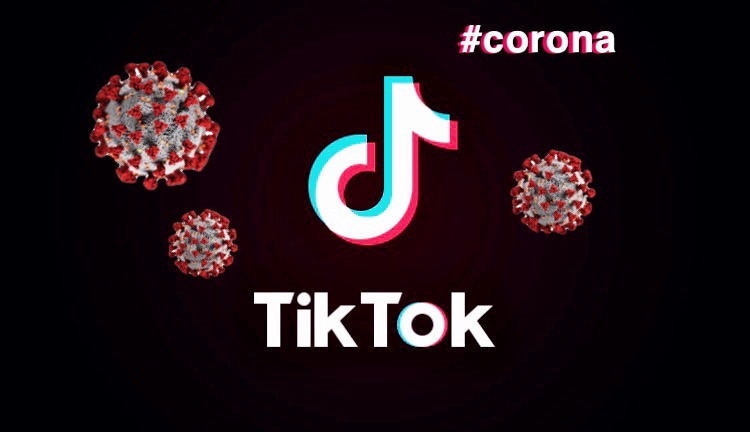COVID-19 takes over social media, becomes source of news for teens
As COVID-19 makes its way around the world, teens are searching for more information through social media platforms.
March 16, 2020
Coronavirus has gone viral. Photos of empty toilet paper shelves and posts of people hoarding hand sanitizers or frantically searching for surgeon masks have dominated social media after the COVID-19 outbreak.
Such posts have instigated anxiety, fear and panic, but for some, social media is their source of quick information about the outbreak: Junior William Stingl receives most of his information about coronavirus from Instagram, while junior Mansfield Owsley relies on Twitter for relevant medical information related to coronavirus.
Prominent social media platforms, including Instagram and TikTok, have created quick links to reliable health sources about coronavirus. For example, every time a user tags #coronavirus on a video, or its algorithm detects a coronavirus-related video, TikTok provides a comprehensive information page about COVID-19 that provides preventative measures, medical symptoms and other vital information. Videos using the hashtag #coronavirus have up to 5.5 billion total views on the app.
Users are immediately presented with a link to the Center for Disease Control’s webpage about COVID-19 when they enter Instagram.
Responses to such messages are relatively polarized. Some appreciate these platforms’ attempts to promote public health awareness and sufficient safety precautions. Others believe that such actions are only exacerbating the enormous and unprecedented panic surrounding the outbreak.
While Owsley appreciates the thought, he also harbors doubts about the efficacy of such links.
“I think the linked CDC parts [on Instagram] are a good idea, but no one actually clicks on those,” Owsley said. “They can go to the site on their own if they really want.”
Owsley thinks that people are “overreacting a bit” but believes that such precautions are “so much better than underplaying the pandemic.”
Junior Maddie Mahoney chooses not to click on the messages she sees on Instagram. To Mahoney, the apprehension surrounding coronavirus amongst teenagers is superfluous.
Mahoney believes that the links are microcosms of the public reaction surrounding COVID-19 as a whole.
“People are too quick to believe everything online,” Mahoney said.
Other teenagers, such as junior Len de la Cruz, receive information about coronavirus from TikTok.
While TikTok has traditionally been regarded as an exclusively teenage platform, organizations are recognizing TikTok as an effective way to disseminate information to youth about coronavirus.
The World Health Organization, for example, recently created a TikTok account to share accurate information about the outbreak amid the deluge of news and fear that have flooded the internet.
“It’s kind of weird to see [the CDC] having accounts on Tik Tok,” junior Camille McFarland said. “That kind of puts things into perspective of how crazy this situation is and how important it is that we get good information—the government is literally getting on TikTok.”
Coronavirus content on the internet, particularly TikTok, is not all general medical information. While some teens have taken to the platform to share “hygiene hacks” or other safety precautions, the majority of coronavirus content is teens sharing their emotional reactions and commentary on the outbreak.
In true Gen Z fashion, teens have turned to memes in the wake of the coronavirus outbreak. Such memes encapsulate the lighthearted nihilism and dark humor that so characterizes Gen Z.
Whether about the constant stream of cancellations notice of quintessentially teenage events like prom or collective scream sessions after getting kicked out of college dorms, teens are using coronavirus memes as thinly-veiled coping mechanisms to mask a raw fear at this nebulous situation.
“It’s Corona Time” is currently one of the most popular background sounds on TikTok. In addition, teens have used the moniker “Boomer Remover” due to its higher risk in the elderly.
“We always turn to memes whenever something crazy is happening, like World War III,” sophomore Thalie Waters said. “But now I feel like something is different. I feel like people are actually scared.”
While organizations are trying their hardest to promote reliable information, some negative propaganda and misinformation exists on TikTok.
In particular, there has also been a spike in xenophobia on Tik Tok against those of East Asian descent. Health officials speculate that the coronavirus originated in Wuhan, China, from bats. Some have distorted this fact to propagate xenophobic ideas, according to Mahoney.
“I’ve seen memes about not eating at Asian cuisine restaurants, which is so stupid because people will still eat Italian food, but not Asian food,” Mahoney said.
According to junior Carolyn DePinho, there has “100% been an increase” in sinophobia, which is racism against those of East Asian descent.
“It always comes down to the fact that ignorant people cannot disassociate geographical locations from a race or a specific group of people,” DePinho said.
Some students cautiously curate the information they use to inform their decisions surrounding coronavirus. Junior Aiden Manji only relies on directly sourced data from the World Health Organization and White House press releases.
“There tends to be very little misinformation about coronavirus that I consume on social media,” Manji said.
Freshman Hanan Wishah is mindful of the content she receives via social media. She follows subreddits dedicated to medicine, and one specific one for COVID-19, with a broad spectrum of information on the topic.
“Social media always has someone trying to convince you one way or another,” Wishah said. “I only trust the information I get if multiple sources are saying so.”







